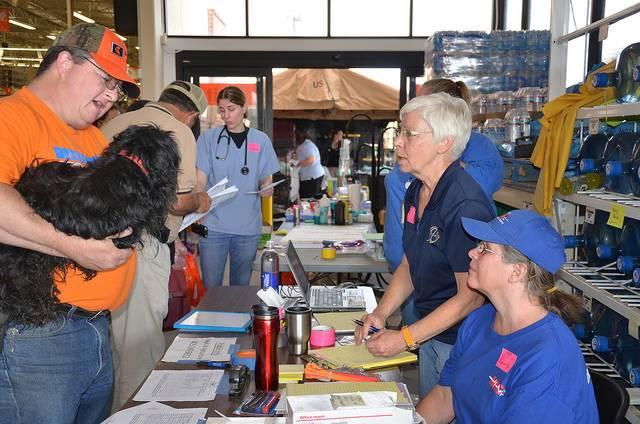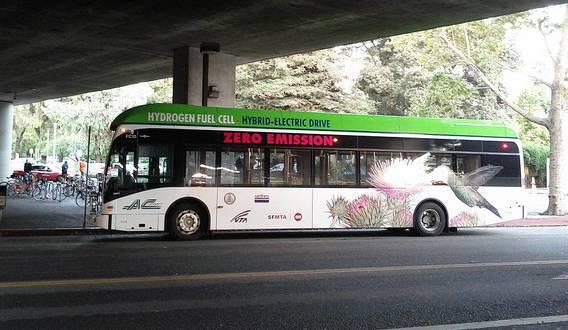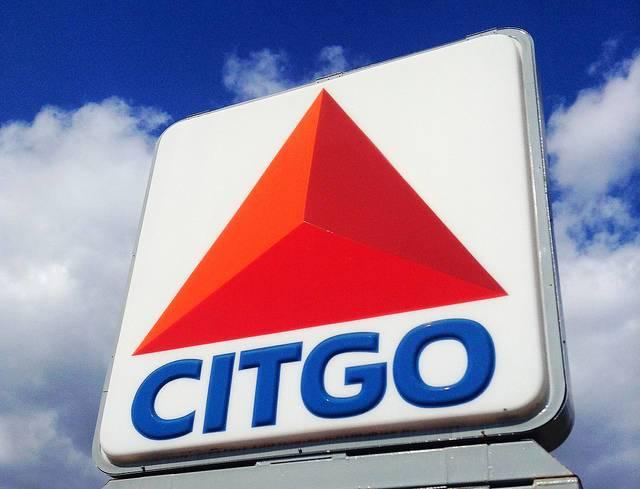Trump Risks Larger Revolt From the Business Community if DACA Revoked


According to Mike Allen of Axios, the Trump Administration is at risk of burning more bridges with the business community if he follows through with his campaign promise to to rescind the Deferred Action for Childhood Arrivals (DACA) program. Allen claimed a Silicon Valley executive told him:
"There's no issue that's more gut-wrenching for us. These are people who came out of the shadows, got jobs and mortgages — we see this as betraying fellow Americans. ... This is consuming a ton of time at every major company."
DACA, which the Obama Administration launched in 2012 after legislation (often referred to as the "DREAM Act") failed in Congress, permits qualified illegal immigrants who entered the country as minors to apply for a renewable two-year period of deferred action from deportation as well as a work permit. The logic as follows was that these children who crossed borders or arrived at airports, only to never return to their “home countries,” had no say in their parents' decision to move - and deportation would be unfair as the U.S. is the only country they have ever known. Since this self-funded program began, applicants have to had to prove how long they have lived in the U.S., document examples of their moral character and are required to finish high school or be enrolled in an education program and then can eventually gain a work permit.
President Trump has wavered on DACA since he was inaugurated in January. He promised to terminate the program once he took office, but shortly after assuming the presidency, he explained during an interview with ABC’s David Muir, “We're looking at this, the whole immigration situation, we're looking at it with great heart.”
Meanwhile, the Trump White House has decided not to defend DACA in court as it has faced litigation since President Obama signed an executive order that started the program five years ago. But Trump’s decision to dodge the issue is untenable now that ten state attorneys generals have filed their own lawsuit with the allegation that DACA is unconstitutional. Furthermore, as his poll numbers have declined, the president has to find a way to shore up support from his base.
The fact that almost 800,000 people could be affected by this sudden change in their legal status - not to mention the millions of family members and friends who could be devastated by the specter of accelerated deportations have worried many business leaders. The optics of families torn apart, alongside the images of Hurricane Harvey (during which public officials have had to publicly announce that immigration checks will not occur at shelters), would be another blow to the White House, which has lurched from crisis to crisis on a weekly basis.
The rollback of DACA could be that proverbial straw that breaks the camel’s back for many business leaders. Many companies have already been frustrated by the travel ban, the exit from the Paris Accords and finally, the botched (or nefarious) response to the violence in Charlottesville. The ethics and morals behind these policies surely have driven some executives to take a stand, with Campbell Soup Company as one example of a company that cut ties to the administration out of principle.
But looking through a business lens, at a fundamental level, companies want certainty. Boasting from the White House about stock market gains is not enough, as history has shown us that markets consistently ride a boom and bust cycle. Enacting confusing immigration policies, backing away from a global climate change commitment and suddenly threatening the work status of approximately 700,000 people makes the business climate more unsteady.
Ending DACA would put 700,000 jobs at risk, not because these people would be deported immediately, but because they would no longer be able to work legally. And the loss of those jobs would mean mortgages and car payments would not be paid, while fewer goods and services would be purchased - creating a ripple effect as 30,000 jobs a month are lost, along with the economic gains that have come with them. And once again, the private sector will have to take the lead on immigration reform - just as it has with race relations and climate change.
Image credit: Todd Dwyer/Flickr
Mexico Tells Trump It Won't Pay for Wall, Will Help Harvey Victims


President Trump's appeal to Mexico to pay for a multi-billion-dollar "border wall" received a unique response from neighbors down south: Mexico won't pay for the border wall, but it is more than happy to send aid to Texas towns besieged by Hurricane Harvey.
After all, that's what neighbors do, right?
On Sunday morning Trump treated his followers to another customary tweet about why he felt Mexico should pay for a wall, insisting that the country would pay for it through "reimbursement/other."
With Mexico being one of the highest crime Nations in the world, we must have THE WALL. Mexico will pay for it through reimbursement/other.
— Donald J. Trump (@realDonaldTrump) August 27, 2017
Mexico's secretary of foreign affairs wasted no time in politely-but-adroitly correcting Trump, stating that "[as] the government of Mexico has always maintained, our country will not pay for, in any way or under any circumstances a wall or physical barrier built on U.S. territory along the Mexican border.. This determination is not part of a Mexican negotiating strategy, but a matter of national sovereignty and dignity."
However, that didn't mean it wouldn't help its neighbor.
"The government of Mexico takes this opportunity to express its full solidarity with the people and government of the United States for the damage caused by Hurricane Harvey in Texas and expresses that we have offered the U.S. government all the help and collaboration that can be provided by the various Mexican governmental agencies to deal with the impacts of this natural disaster, as good neighbors should always do in times of difficulty."
Trump hasn't yet taken to Twitter to respond to Mexico's offer, but Secretary of State Rex Tillerson thanked the Mexican government, calling the offer "very generous."
Texas Governor Greg Abbott on the other hand, does intend to take Mexico up on its offer, which includes food, medical supplies, troops, boats, water and portable showers.
"Texas and Mexico share more than half the border. There are families, marriages, businesses that bind our two sides. This is about being good neighbors," explained Carlos Sada, Mexico's undersecretary for North American relations.
Mexico's Red Cross has also paid a visit to Houston. Earlier this week the "Cruz Roja" sent out a request for paramedics willing to travel to the besieged city. The 33 volunteers come from regions all across the country. They are expected to be in Houston until mid-September.
And with the latest flooding in eastern Texas, other first responders in Mexico are stepping up to help as well. Volunteers associated with Topos Aztecas, which specializes in complex extractions and rescues will be paying a visit to towns like Rockport, Tex., where the hurricane decimated neighborhoods.
The coordinator of the nonprofit aid organization Socorros, Hugo Velasquez, was careful to note that at the moment there is no formal agreement between the two federal governments supporting the aid. The organizations are simply sending aid because they know it's needed.
The state government of Texas is also urging everyone affected by the Hurricane to seek safety and, with the aid of the Mexican government, is broadcasting a special message to undocumented immigrants who may be afraid to seek help.
"Don't be afraid to come out. There is no deportation operation underway. We have the assurance of Gov. Abbott and the mayor of Houston," Undersecretary Sada said.
This isn't the first emergency that the government of Mexico and the country's rescue organizations have responded to in the U.S. In 2005 the Mexican government sent soldiers and supplies to help victims of Hurricane Katrina. Over the three-week period, they delivered in excess of 180 tons of supplies, 150,000 meals and conducted 500 medical consultations.
But while it's true that Texas has a strong bond with Mexico, it's a complex one. Voters in Texas overwhelmingly voted for Trump and the border-wall concept in 2016, despite a history of cooperation and help on both sides. Perhaps this latest offer of support will pave the way to more collegial relations.
Image: Flickr/The National Guard
Businesses Devise Unusual Ways to Help Raise Hurricane Harvey Donations


Businesses have been reaching out to help Hurricane Harvey's flood victims and some companies have come up with some more unusual ways to give back.
Home improvement, design and furnishing companies across the affected areas are mobilizing both donations and, in some cases, volunteers to help transport repair supplies to victims. Home Depot said it would donate $1 million to an array of relief organizations through its Home Depot Foundation and ensure that victims have as much supplies as possible to get a fresh start on repairing their flooded homes.
Matt Cameron Rugs and Tapestries, whose carpets have adorned the floors of the likes of Barack Obama and five-star hotels said they would pay for carpet cleaning for affected homes.
And Mattress Firm, in Houston, is putting its mattresses where it counts, saying it will donate up to $1 million in mattresses to flood victims, as well as another $1 million in profits until Sept. 5.
"We will work to get these items back to Houston, as well as to those who will be taking temporary shelter in North Texas," CEO Ken Murphy told his employees. The company is also looking at mobilizing donations in other affected areas of the state.
During the storm, Gallery Furniture in Houston opened its various display floors to displaced victims, allowing them to stay in the furniture store's show rooms until it was safe to leave. The company said it eventually reached capacity.
As of Wednesday night, more than 40 companies had organized donation drives and said they would donate at least $1 million to relief efforts. More than $70 million has been raised so far. United Airlines has a donation center on its website and has so far collected $1.7 million, the lion's share going to the Red Cross. Donors can specify where they would like their donations to go.
One of the smaller resources is the Texas Diaper Bank, a nonprofit whose work on any given week is significant. Donated funds go to supporting the littlest flood victims with their most basic needs.
Image: Flickr/USDA/courtesy of ODAFF
Hurricane Harvey – a Tragic Yet Teachable Moment


Like Houston and its neighbors, many municipal governments are painfully aware they are at risk when an extreme storm hits. The devastation from Hurricane Harvey is of biblical proportions, and we mourn the loss of lives and livelihoods that it has caused. Still, there are valuable takeaways from it, and here are 10 that we should take to our city departments and city councils immediately:
- Coordinate federal, state, and local planning, building and rebuilding requirements and review them to prepare for such a disastrous storm. This should help speed up in assisting property owners seeking post-disaster assistance.
- Establish building restrictions and setbacks through zoning codes that consider a once-in-500-year weather-related catastrophe occurring. These changes will only affect future structures, but they will help protect a community for future generations. Also, set property owners’ expectations for the future value of their property, potentially including a “savings” clause so that a setback won’t remove all value from smaller lot owners.
- Prohibit private coastal armoring at the development-permit-process stage.
- Educate the public about the risks associated with coastal living and the ways in which building restrictions address those risks. Conduct education campaigns when and where possibly.
- Establish a policy about repetitive loss, limiting the number of times a building may be severely damaged by coastal events before it must be demolished.
- Put plans in place for a buyout program that would go into effect soon after a disaster for residents most affected by a flood or other weather-related disaster.
Speaking of buyouts, here are four actions that can be taken in Houston and other cities to help their flood-ravaged residents:
- Move quickly. As families are weighing their options and trying to find normalcy for the short and long haul, buyout programs are most successful when initiated immediately after a natural disaster
- Determine where you want development to occur and assist homeowners in relocating to those areas
- Identify those areas that have experienced repeated loss and prioritize the homes there for buy out. Also, consider where continuous areas of land can be returned to their “sponge” function with buyouts of contiguous properties turned into dry-until-rain floodplains. Make these areas multifunctional (e.g., parks, bike paths) to provide community amenities.
- Raise awareness about the benefits and costs of remaining in vulnerable areas, clarifying the benefits of acquisition. Be transparent and work with trusted nonprofits and community groups – listening first and then speaking in a unified voice to raise this awareness.
In addition, create a standard formula to determine property values that are fair and avoid costly and time-consuming negotiations.
Thanks to the “Managed Coastal Retreat Handbook” from the Columbia Center for Climate Change Law for many of these ideas.
Joyce Coffee is president of Climate Resilience Consulting, working with leaders to create strategies that protect and enhance markets and livelihoods through adaptation to climate change.
U.S. Energy Dept. Needs Hydrogen for Future Grid Resiliency


The U.S. energy infrastructure has been in the news this week, as the devastation from Hurricane Harvey continues to ripple through the Gulf Coast region of Texas, a major oil and gas hub. This kind of infrastructure concentration is rapidly becoming outdated in a warming world in which weather events are more frequent and more extreme. With that in mind, let's take a look at a new Energy Department initiative aimed at leveraging hydrogen to create a more diverse, resilient energy infrastructure for the nation.
Note: The Houston Chronicle has assembled a list of contacts for persons interested in donating or volunteering to assist victims of Hurricane Harvey.
Hurricane Harvey and the U.S. energy infrastructure
Almost one-third of the nation's refining capacity is located along the Gulf Coast in an area stretching from Texas to Louisiana.
Most analysts expect gasoline prices to rise as a result of the storm. According to a report in Forbes magazine on August 29, though, the ongoing global oversupply of crude oil is expected to cushion the impact on prices at the pump somewhat.
Nevertheless, the impact on oil and gas infrastructure has been significant. Offshore rigs can resume operations relatively quickly after a storm passes through, but onshore facilities can struggle with the effects of flooding for many days. In the case of an extreme, lingering event like Harvey, recovery can take weeks if not months.
Several refineries have shut down including ExxonMobil's enormous Baytown refinery. Shipping has also been impacted, and the Colonial pipeline -- the largest pipeline from the Gulf Coast to points east -- has reported disruptions.
Onshore drilling operations, including fracking, have also suspended operation.
Hydrogen and energy diversification
The era of fossil fuels is far from over, so Harvey does not spell an end to the Texas oil and gas hub. However, the storm does demonstrate something that the U.S. Department of Energy has been hammering away at for years.
That is, as a matter of national defense and domestic security, the U.S. energy infrastructure can no longer lean on concentrations of oil and gas activity.
Energy diversification was a key feature of the Obama administration. In addition to ramping up wind and solar investments during Obama's terms in office, the Energy Department embarked on an ambitious biofuel initiative aimed at developing commercially viable biofuel crops for each region of the US.
The Obama administration also zeroed in on hydrogen as a pathway to diversification.
That strategy garnered scorn from some energy observers, for two main reasons. Hydrogen can be used to in a fuel cell for zero emission electric vehicles, but the current primary source for hydrogen is natural gas.
In addition, hydrogen fuel cell electric vehicles are expensive compared to their battery-powered cousins, and hydrogen fuel stations are few and far between.
However, those criticisms are becoming outdated. The Energy Department is turning its attention to renewable hydrogen sourced from water, California and other key states are building out their fuel station networks, and more auto manufacturers are beginning to invest in lowering the cost of fuel cell technology
The hydrogen energy infrastructure
That brings us to the Energy Department's new call for projects.
As illustrated by the schematic below, fossil fuels are currently part of the strategy. However, wind, solar and geothermal are also part of the picture. Given a supportive federal policy (more on that in a second), the role of renewables can grow while fossil fuels fade into the background.
The main point is that a broad range of fuels -- fossil, renewable, and nuclear -- can be used to generate electricity, and electricity can be used to "split" hydrogen from water.
And, just as diversity goes into hydrogen production, diversity comes out. The Energy Department points out that water-splitting can foster grid flexibility and provide the industrial and nuclear power sectors with a market for their waste heat:
...While much of this hydrogen is currently produced from natural gas, a rapidly growing alternative is to produce hydrogen by splitting water (e.g., electrolysis or thermochemical cycles). In addition to producing hydrogen, electrolyzers have the potential to supply marketable “grid services” due to their ability to rapidly respond to fluctuations in power supply. Water splitting can also enhance the economics of industrial processes that produce high-temperature heat, such as nuclear power plants.
The Energy Department also notes that the fuel cell electric vehicle market is just one of many end uses for hydrogen:
Hydrogen is already an essential feedstock in the U.S. oil refining and ammonia production industries and is emerging in other applications, such as the chemical and food industries , transportation, ironmaking, and backup power.
Energy and national defense
Energy has long been considered a keystone of national defense, and in fact the U.S. Energy Department has its roots in the nation's nuclear weapons program during World War II.
When a destructive storm like Harvey hits, a nation at peace can focus on the human impact and put the full weight of its resources into rescue and recovery.
For Campbell's, Brand Value Means Customer Engagement


COMMIT!Forum will convene hundreds of corporate social responsibility leaders and CEOs from CR Magazine’s annual 100 Best Corporate Citizens ranking. The event includes a pre-conference workshop on integrated CSR and sustainability reporting from BrownFlynn. Join MGM's Chief Diversity and CR Officer Phyllis James, Terracycle CEO Tom Szaky, Aman Singh, editor in chief of Futerra, and Icema Gibbs, head of CSR at Jetblue Airways. More information here.
For several years, corporate social responsibility (CSR) advocates have suggested that companies will lag on solving their environmental and social challenges, putting them at risk - unless CSR is integrated into the company instead of cast aside in a silo. To that end, Campbell Soup Company is one firm that stands out for making CSR critical to both its overall strategy and brand value.
Almost 150 years old, the $8 billion food giant has witnessed plenty of change recently, both internally and externally. Campbell’s CEO, Denise Morrison, changed an old-fashioned food processing company into a more nimble and innovative operation. She has pushed the company to be more responsive to consumers’ needs while encouraging employees to step out of their comfort zones and take risks.
Campbell’s, along with its competitors within the prepared foods industry, really has had little choice but to evolve with the times. Consumers are more inquisitive about where their food is sourced, demand more transparency and ask for more sustainable and ethical ingredients. Campbell’s has been proactive on that front, as Morrison announced in 2014 when she insisted the company would to become one making “real food that matters for life’s moments.”
One way in which Campbell's held its commitment to transparency was with last year's announcement that it would disclose whether genetically modified organisms (GMOs) were present in its food products. At the same time, Campbell’s also went a step further by breaking ranks with many food companies and trade associations with its support of mandatory federal GMO labeling for food products. That decision sharply conflicted with the stance taken by the Grocery Manufacturers Association (GMA); when Campbell’s announced it would end its membership with the GMA last summer, Morrison explained to investors that the company’s departure was driven by “purpose and principles” and it was not a financial decision.
Campbell's willingness to share information about its ingredients now occurs even before a consumer enters a supermarket. The company has launched a web portal, WhatIsInMyFood.com, that allows visitors to understand the ingredients that end up in Campbell's products, from its chicken noodle soup to Pepperidge Farm Milano cookies. These are not just a simple list that appears on a product's label or package - consumers have a tool to understand how various foods gain that crunch, sweetness or texture. As with any food company's supply chain, some ingredients, such vegetable oils, cornstarch and sugar may be derived from GMO crops - or may not - but in any event, the consumer at least can really gain a deep knowledge of those ingredients before they end up in a shopping cart.
In addition to that microsite, social media has become the fastest means for the company to communicate with stakeholders and consumers about their concerns as well as changes that the company is undertaken. On that front, Dave Stangis, Vice President of Corporate Responsibility and Chief Sustainability Officer at Campbell’s, has contributed to the company’s agility at communicating to its stakeholders via platforms such as Twitter and LinkedIn.
“Campbell’s approach toward social media has been evolutionary,” explained Stangis as he detailed the company's changes since he joined the company nine years ago. “During my first two weeks on the job, I was looking for a way to communicate progress between my start date and the first company sustainability report I worked on.” Stangis found his home on Twitter, where he has an impressive 14,000 followers and tweets multiple times a day.
Stangis and Campbell's stick to audience-based communication for their social media strategy. “We try to paint a picture as if our customers are looking into the window,” said Stangis as he noted the company’s efforts to be more transparent. “We want them to know what our employees are working on.”
Indeed, the ongoing conversation between the Campbell’s and its customers is a two-way street, as the company provides customers several options for communicating with the company. But this conversation is not limited to what the company is doing now – Stangis said it is also important for the company to display thought leadership on a wide array of issues, from community work to health to corporate sustainability.
As with any public company, Campbell’s has a rigorous policy covering employees’ use of online platforms. After all, it only takes one rogue or careless employee to spark a public relations fiasco. “People get comfortable on social media,” Stangis quipped. At the same time, platforms such as Twitter help various voices within Campbell’s share their perspectives with the company’s stakeholders. Stangis writes and reviews a sizable portion of the content for the company’s Twitter handle that focuses solely on its CSR efforts. But Stangis’s team and other employees across the company also have opportunities to build Campbell’s ongoing story on social media and in its newsroom.
Collaboration across Campbell’s various teams has also helped the company deal with changing consumer trends and external events that could easily throw any company a curve ball. For example, more consumers voiced their opposition to adding the synthetic compound bisphenol A (BPA) as linings for canned foods over health concerns. Even though the U.S. Food and Drug Administration has determined BPA is safe, Campbell's listened to both consumers and advocacy groups, and announced in 2012 that it would phase out its use in its products. That process accelerated last year; in the meantime, Campbell's continued the conversation with its stakeholders on various outlets including Twitter until all BPA was removed from can liners this summer.
And just a few weeks ago, Campbell’s found itself in the spotlight again when Morrison announced her departure from the White House’s manufacturing council after the violence in Charlottesville. In the days leading to that decision, various users voiced their displeasure at corporate tweets that seemed out of touch. Stangis was quick to note Morrison had served on an exports advisory council during the Obama Administration - and the company, one that tries to stay out of the political spotlight, would have Morrison stay on the council. “She always thought that being on these councils was the best thing to do to support U.S. jobs and employment growth,” Stangis said.
But it was clear after the president's press conference at Trump Tower on August 15 that remaining on the council was untenable. Morrison also felt there were other ways to work on boosting economic growth – and after that decision, the company allowed supporters and critics of President Trump to duke it out in comments that are still posted on Campbell’s website.
Whether the company takes a stand on GMO labeling, racism, the Paris Accords or diversity, Stangis insists that Campbell’s decisions are not political in nature, but are made because they are the right thing to do. Even though Morrison made the ultimate call about the council, she still consulted the C-suite within the company’s Camden headquarters, including legal, public affairs, communications and Stangis – who, after seven years of reporting to the company’s general council, now reports directly to Morrison and has for the past two years.
It is important to remember that Campbell’s corporate responsibility commitment is to engage its employees just as proactively as its customers. In addition to communicating the company’s decisions through conventional means such as press releases and social media, employees are kept in the loop as major decisions and policies are made. Morrison held a town hall to explain her reasons for leaving the White House advisory council to employees.
This is not the Campbell Soup Company of our parents’ and grandparents’ generations. Other than the iconic soup can labels made famous by Andy Warhol in the early 1960s, much about the company and its customers' preferences has vastly changed. Cutthroat competition has moved sales from brick-and-mortar to the cloud, millennials' eating habits and health and nutrition research have transformed Campbell’s and much of the food industry. Through it all, Stangis is tasked with his two overarching goals: protect and build the brand. Stakeholders are clearly buying in, as Campbell’s is a mainstay in rankings that measure corporate citizenship and companies’ reputation in the marketplace.
Image credit: Campbell Soup Company
Trump Reversal of Flood Risk Standards Will Hurt Communities Like Houston


An executive order that President Donald Trump signed only weeks before Hurricane Harvey made landfall last week is receiving brusk criticism from lawmakers and environmental organizations this week.
Rep. Carlos Curbelo, a Florida Republican, called Trump's reversal of the Obama-era Federal Flood Risk Management Standard "irresponsible. [The reversal] will lead to taxpayer dollars being wasted on projects that may not be built to endure the flooding we are already seeing and know is only going to get worse," Curbelo said in a statement.
The reversal lifts federal requirements for climate change and sea-level rise to be taken into account when reviewing standards for construction projects. According to the Trump administration, the rule caused unnecessary red tape that would have slowed construction projects. Trump has promised to rebuild U.S. infrastructure, including bridges and freeways and do so expeditiously.
"No longer will we allow the infrastructure of our magnificent country to crumble and decay," Trump vowed before the Aug. 15 of an executive order that rescinded Obama's food risk standards.
But according to experts, Trump's removal of the standards could force the country to spend more money on aid and create more problems for cities impacted by events like Hurricane Harvey.
According to Joel Scata, a lawyer with the Natural Resources Defense Council, the new standards were an effort to build on the learning experiences of two previous disasters, Hurricane Katrina in 2005 and Hurricane Sandy in 2012, which brought about widespread damage in areas whose infrastructure was ill-equipped to withstand a record hurricane.
"This not only would have protected people and property from future flood events, but also was really meant to reduce the amount of disaster aid we spend on recovery," Scata told Business Insider.
By speeding up construction processes and circumventing reviews that are meant to determine whether there is increased environmental risk in the area, experts fear places like Houston, which will take years to rebuild, will repeat the mistakes of the past. Engineers and design experts are attributing Houston's substantial flooding to poorly designed infrastructure and a lack of climate mitigation.
Other organizations, like R Street Institute, a free-market think tank that focuses on complex public policy issues, points out that it's often human expansion that is at the core of how communities are affected by events like hurricanes.
"Most of the increase in disasters is not actually due to changes in the weather but changes in human living patterns," RJ Lehmann, told NPR. So rebuilding without considering the vulnerabilities to climate change will only become more costly for communities, he said.
And the Center for Biological Diversity is raising questions about the issues that prompted Trump to rescind the standards in the first place. it has submitted a Freedom of Information Act request for records related to Trump's executive order. The Center says it wants to understand the factors that led to Trump's decision, so it is asking to unearth records from agencies that would either have been impacted by the decision or have insight into the rationale. An FOIA request was sent Homeland Security and the Federal Emergency Management Agency as well as the Council on Environmental Quality and Council on Economic Advisors.
Shaye Wolf, the Center's climate science director said Trump's dismissal of climate change -- which the president has gone on record to call a "hoax" -- puts cities like Houston at risk if they are rebuilt without proper consideration of the environmental factors that increase the chance of damage in a natural disaster. The Center wants to determine whether Trump's decision to throw out the standards was based on a rejection of climate change risks or the fact that the standards were implemented by Obama, whose work Trump has largely rejected to date.
"The death and destruction in south Texas offer a grim preview of the human cost of Trump’s denial of science. As we look at Hurricane Harvey’s devastating effects, Americans need to know why Trump refuses to protect coastal communities from future catastrophic flooding," Wolf said in a statement.
With his recent visit to areas devastated by Harvey, Trump has promised to do all he can to support and ensure funding for rebuilding communities hit hard by the hurricane. The question is whether it will be enough if more storms like Harvey come to ground.
Image: Flickr/Bill Bradford
Will Whole Foods’ Lower Prices Make Sustainable Food More Accessible?


Maybe they should now start calling the world’s most famous organic non-GMO grocery chain “Half Paycheck.”
In case you missed the buzz, Amazon’s acquisition of Whole Foods officially closed earlier this week. The absorption of the 460-store chain, long derided by its critics as “Whole Paycheck,” sent other supermarket companies’ stock prices tumbling while some consumers feared this transaction could accelerate the death of brick-and-mortar retail. Others have suggested Amazon’s leap into the food business could actually be a step forward for the conscious capitalism movement.
What had become clear was that Whole Foods was perhaps a victim of its own success. The chain struggled for almost two years as it was no longer the sole purveyor of organic, sustainable, local or healthful food. Companies such as Walmart expanded their lines of organic food products, and often at prices cheaper than Whole Foods. Now Amazon threatens to completely disrupt the entire grocery industry, and the results could actually benefit consumers in several ways.
For example, Whole Foods could soon benefit from Amazon’s vast supply chain, allowing the Austin-based grocer to buy goods at even more competitive prices than in the past. And Amazon did not waste any time trying to bring more price-sensitive consumers back. Many Whole Foods store managers kept store employees late on Sunday night to roll out new co-branded signs announcing lower prices for almost two dozen products.
The move was certainly a success on many fronts as news headlines across the country generally lauded the move. But when customers were asked, the reviews were mixed. “The prices are the same so far for the things I buy,” griped one Venice shopper to the Los Angeles Times when she realized her favorite vegan products were not on that discounted products list.
Some journalists were nonplussed by the lower prices for items that included organic Gala apples, baby kale, almond butter, rotisserie chicken and bananas. The Miami Herald found that amongst 10 popular items Whole Foods decided to reduce in price, the total bill was lower than that of the popular southeastern U.S. grocer Publix – but still a couple dollars more than if the same products were purchased at Trader Joe’s. And for the poor sop whose oatmeal at the breakfast bar set him back $13 at a Whole Foods store in Washington, D.C., the hype over the new Amazon-Whole Foods marriage was also not impressive.
But Amazon is not trying to reach the consumers who forget to weigh their food before they head to the checkout line. This strategy is about Amazon pulling even more consumers into its sprawling web of services, including attracting new customers to Whole Foods (while not turning off its loyal customers who enjoy the shopping experience), believe they are buying more healthful choices and are happy paying more for what they perceive as higher-quality products.
In the meantime, Amazon is still working on the details of how and when its Prime membership will double as Whole Foods’ loyalty program. The popular Whole 365 private-label product line will reportedly soon be a prominent offer on Amazon’s Prime Pantry and Prime Now. And of course, those who do not trust that packages will remain on their doorstep after delivery will appreciate the upcoming Amazon locker service arriving at more Whole Foods locations. Such foot traffic could result in more sales for the online retailer as customers pick up a $7.99 bottle of juice to go with their box of baby wipes.
Furthermore, Whole Foods’ recent struggles could be solved by the fact that two-thirds of higher-income households do not have convenient access to Whole Foods; and for those who live paycheck to paycheck, Amazon may offer the opportunity to buy nutritious food at a fair price. Those foods could include the vegan products mentioned by that aforementioned Venice grocery shopper.
Amazon will have to be nimble, however, and show that these lower prices were not just a short-term stunt to generate headlines. A Bloomberg review, for example, found that Walmart was still overall a cheaper option than Whole Foods. Sure, Whole Foods has built its business on its stringent no-GMO, fair trade and animal welfare standards, but for households that have set a strict monthly grocery budget, Walmart will still remain their first choice. “It could be tough to persuade cost-conscious shoppers to pay $1.99 for a can of Whole Foods corn that they can get at Walmart for 68 cents,” surmised Spencer Soper and Craig Giammona of Bloomberg.
Amazon and Whole Foods have time to smooth out the wrinkles; but they need to ensure this change is convincing so it will last. Walmart will refuse to give ground in the low-price grocery wars. So far, however, this merger is off to a solid start and could help score Whole Foods the shoppers it needs to remain competitive. Chess moves by Amazon’s and Whole Foods’ competitors, as well as the risk that the companies’ cultures could clash, still pose risks, suggests Joseph Cherian, a marketing professor at the University of Notre Dame. “Overall, I'll give the launch a B+,” he concluded on CNBC.
Image credit: Tyler Cipriani/Flickr
Sanctions on Venezuela Exempt Citgo -- U.S. Energy Portfolio at Risk


Amongst the lingering aftermath of Charlottesville, pardon of an Arizona sheriff as Hurricane Harvey slammed into Texas and punting of tax reform to Congress, President Trump recently levied more sanctions against Venezuela.
Supporters and critics of the president will long debate whether these sanctions will make a difference. After all, Venezuela has become a cesspit of human rights abuses. The harassment and oppression of opponents of the late Hugo Chavez and now his successor, Nicolas Maduro, have long been brutal. The country has also become an economic basket case, as the headlines over shortages of toilet paper showcase just one symptom of the country’s financial collapse. Ongoing social and economic upheaval have together driven hundreds of thousands of Venezuelans, including many LGBT citizens, to seek new lives and even asylum in countries such as Chile, Uruguay and Spain. The crisis has even led more Venezuelans to petition for asylum in Spain than Syrians.
But there is a caveat to the White House executive order that launched more sanctions against this country of 30 million people: Citgo Petroleum Corporation, which the Venezuelan national oil company Petróleos de Venezuela (PDVSA) owns, is exempt from the sanctions announced last week.
According to the White House’s press office, exempting Citgo from this updated list of sanctions is necessary to “mitigate harm to the American and Venezuelan people.” In addition to leaving Citgo’s transactions alone, the sanctions also exempt humanitarian assistance and financial dealings related to existing Venezuelan debts – and “financing for most commercial trade, including the export and import of petroleum.”
Citgo has long been a political football between the American and Venezuelan governments. During the presidencies of both George W. Bush and Barack Obama, Chavez relished the opportunity to export oil via Citgo to the U.S. at below-market costs, or even for free, so low-income citizens in cold weather regions such as New England could have affordable home heating oil. And also through Citgo, Venezuela offered humanitarian aid for Hurricane Katrina victims in 2005; recently Venezuela said it would contribute up to $5 million in assistance to help with Hurricane Harvey recovery efforts if accepted.
The White House has defended Citgo’s exemption by noting that the $32 billion company will not be allowed to divert any of its profits to its Venezuelan parent. But as has been the case with this White House, there is always more to the story - and this one raises plenty of eyebrows.
According to Timothy Cama and Megan Wilson of The Hill, one of the many lobbying firms Citgo has hired, Avenue Strategies, benefits from close ties to the Trump White House. Co-founded by former Trump advisors Corey Lewandowksi and Barry Bennett, the firm has represented Citgo, which through June has paid at least $80,000 while Bennett reportedly lobbied the White House, the Department of Energy and the Department of Justice - as well as the Treasury Department, which runs the unit that launches and monitors economic sanctions.
Meanwhile, Congressional leaders have expressed concern over evidence that the Russian energy company Rosneft could take control of Citgo's assets. Russia's largest energy company loaned $1.5 billion to PDVSA in December, with the Venezuelan oil firm offering 49.9 percent of its shares in Citgo as collateral. Rosneft has been banned from having any financial transactions with U.S. companies since sanctions were first launched against Russian companies in 2014. ExxonMobil sought a waiver this spring so it could partner with Rosneft on oil drilling projects in the Black Sea, but the Treasury Department denied that request.
Meanwhile, PDVSA's precarious financial situation means that three of Citgo's refineries, as well as several pipelines and fuel terminals, could end up controlled by Rosneft. Instead of draining the swamp, the swamp could become even deeper and murkier as the blurred lines between lobbying and policy making at the White House risk disrupting America's energy portfolio.
Image credit: Mike Mozart/Flickr
Why Diversity and Inclusion Begin at the Top


By Sangeeta Waldron
(A version of this piece was originally published on Justmeans)
President Trump has ditched the manufacturing council of business leaders after more CEOs quit over his handling of violent clashes in Charlottesville, Va. Merck’s CEO Kenneth Frazier, the only black business leader in the group, was first to resign after Trump initially failed to explicitly denounce the far-right rally. His presences -- and resignation -- highlight the lack of real diversity at the top ranks of executives.
The importance of diversity in business isn’t a new topic, as many reports flag up the importance of women and minorities in high-profile industries like technology, or in key leadership roles across industries. It’s widely acknowledged that diversity boosts sales and revenue, creative thinking and innovation. Yet, while many companies have put mentoring programs and networking events in place for these underrepresented groups, there have been few results at the top. But now, through social media and the Internet, a spotlight has shone on how big the diversity problem is, and what is needed for change.
In his book, SPIKE, René Carayol, MBE one of the world’s leading business gurus specializing in leadership, culture and transformation, shares the magic and simplicity of the SPIKE (Strength, Positively, Identified, Kick, Start, Excellence) philosophy. In the world of SPIKE, there are no losers – everyone has something they are great at. The book brings together a proven formula for personal and business development. I asked Carayol about diversity on boards, including the challenges he may have faced from his own unique experiences on the boards of some of the biggest international organizations - from Marks & Spencer and Pepsi to IPC Media—SW.
TriplePundit: Why don’t more leaders and organizations make diversity a priority?
René Carayol: It still appears to be really difficult to “walk in the shoes” of the marginalized when you have never shared their experience. There was a time when the need for diversity had to be explained, educated and proved. Thankfully, that is no longer the case, as most people definitely get it. Unfortunately, many are still working on the business case for diversity—that proves that their organization still has a way to go. It is just the right thing to do, no queries or challenges stand up anymore!
3p: What are the challenges of making a board more diverse?
RC: The most unfortunate and hurtful saying that we still hear far too often is, 'we are not prepared to compromise our standards.' Nobody wants to be a token! There is a wide and highly-available talent pool of diverse candidates, yet we are still not seeing the necessary appointments. This is both implicit and unconscious bias in action. First impressions still tend to carry the day.
3p: What challenges have you faced as a black person on boards? And how did you overcome the challenges?
RC: At the top of the organization, the pressure is high and it drives peak performance. As soon as you are able to tangibly ‘contribute,’ it becomes easier to be treated as an equal. On occasion, things can go awry, and this always requires confrontation. Strangely, in the more robust atmosphere of a board meeting, it is highly appropriate for these issues to be tackled immediately and directly. It can be extremely uncomfortable, but it is necessary, as the learning and experience at the top of the organization soon starts to trickle downwards. As a board director, every individual carries both the burden of responsibility and of leadership. All transformation best starts at the top.
3p: Is there a difference between a diverse board and one that is inclusive? Or are they both the same thing?
RC: As the old saying goes, 'diversity is being invited to the dance, inclusion is being asked to dance.' It’s no longer good enough to be just present, and in many respects, even inclusion is no longer enough – today, it’s more about the feeling of belonging. As soon as you feel you belong, it changes the feeling of being different from a negative to a positive.
3p: What advice would you give President Trump right now about diversity and “making America great again”?
RC: Apart from “resign immediately”?!
We are all proudly different, and that’s a huge strength. What makes America great is that people from different origins come together as one, to build the most powerful nation on the planet.
We have just had the pleasure of watching the 2017 World Athletics Championships in London. We watched the American athletes of all races compete and win by far the most medals and then fully embrace the American flag. Witnessing their collective pride as they receive their medals and stand to attention for the Stars and Stripes is the picture of how great America really is. Then we witness the tragic scenes in Charlottesville . . . the President has an enormous part to play in healing the divide, not fueling it.
Sangeeta Waldron writes on women and children; sustainability; climate change; social enterprise and social entrepreneurs. She has a particular interest in India. She is the founder of Serendipity PR, in London, UK, where she works with high-profile brands and organizations in the public, non-profit, and corporate sectors, winning awards for her work from the communications industry. She has been appointed to the Women In Enterprise Taskforce and was until recently chairman of London's leading conscious well-being organisation, Alternatives, which hosts leading speakers such as Eckhart Tolle, Deepak Chopra, Marianne Williamson, Neale Donald Walsch and many other well-known names. She describes herself as a Spiritual Entrepreneur, Conscious Explorer; enjoys paying it forward and being a mum.